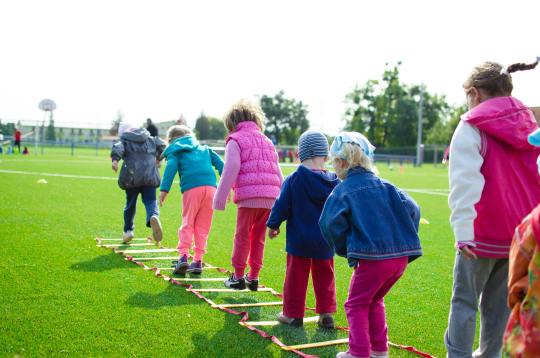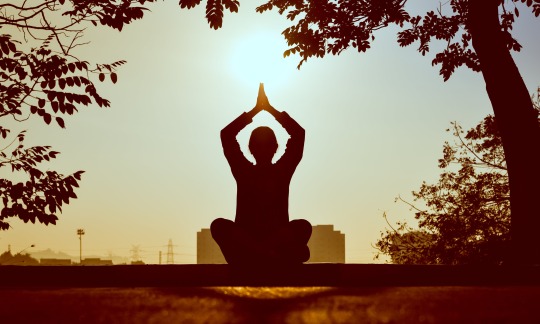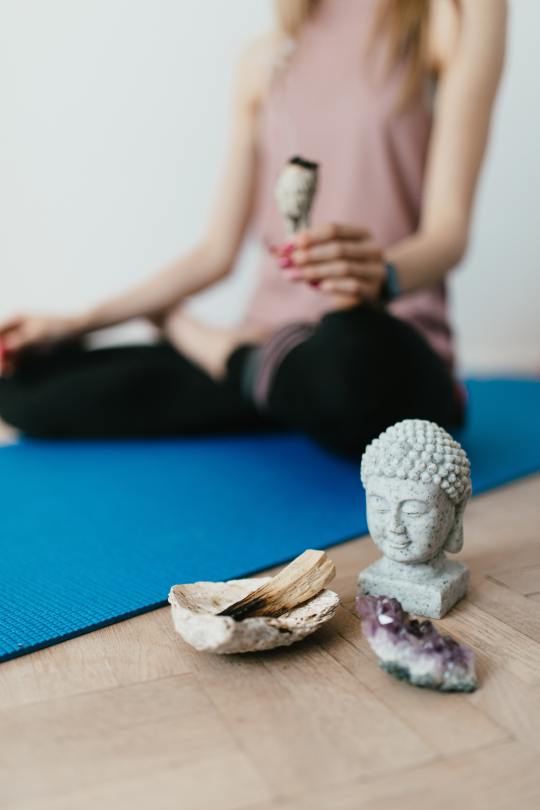Cynthia Hwang, a University of Washington BA graduate in finance, marketing, and international business, has over two decades of experience in the banking sector. Now serving as a vice president at a financial institution in Seattle, Washington, Cynthia Hwang helps clients manage their portfolios, among other roles. Cynthia Hwang has also worked in other areas, including as a senior business relationship manager VP, business banking area manager VP, and business banker VP with the same institution. She also held similar roles at Wells Fargo, Washington Mutual, and US Bank. With extensive knowledge and experience in the banking sector, Ms. Hwang has received honors and awards such as being a national achiever in 2010 and 2011 in business banking while working at her current institution. Before her career in wealth management, she was a successful commercial banker for over ten years, leading a team of 25 business bankers. Cynthia Hwang is also a board member of Eastside Baby Corner and the Greater Chinese Chamber of Commerce. She is passionate about diversity, equity, and inclusion, and Asian American activism in the Pacific Northwest. Outside her professional life, Cynthia Hwang enjoys yoga, travel, and spending time with her two children. She is also a concert-level pianist and violinist and is fluent in Mandarin Chinese.
Don't wanna be here? Send us removal request.
Text
An Overview of Piano Tuning

The piano remains a timeless musical instrument. To produce its melodious sounds, it combines complex engineering, mechanics, and artistry. Pianos comprise 230 strings, which have a significant amount of tension to vibrate and create rich and definite tones. To maintain the quality of a piano’s sound after several instances of usage, they require regular tuning.
Piano tuning refers to the process of adjusting the tension of the piano strings to make them vibrate at a more accurate and correct frequency. Playing an out-of-tune piano can cause frustration, especially for beginners who continue developing their musical ear. For students and hobbyists, keeping the piano in tune makes playing more enjoyable, boosts confidence, and encourages regular practice.
Factors like frequent use, string stretching, and relocation usually adversely impact piano tuning. Frequently played pianos, especially concert pianos, experience wear on the strings and hammers, requiring more frequent adjustments. New pianos or those with recently replaced strings go through a settling period where the strings stretch, necessitating multiple tunings before stabilizing. Even moving a piano across a room or to a new location can disrupt its tuning due to vibrations and shifts in its internal components. Regular tuning helps address these issues, ensuring the instrument stays in peak condition.
Tuning the instrument requires ensuring that it aligns with a specific pitch, such as adopting the international standard of A440 that places A above the middle and C vibrating at 440Hz. Professionals use several tools, such as tuning harmers and electronic tuning devices. The tools help them adjust string tension and ensure that the piano produces a more defined and precise sound.
Moreover, tuning a piano prolongs its lifespan and maintains its structural integrity. For instance, uneven string tension strains the piano’s soundboard, tuning pins, and soundboards. Regular tuning spreads the tension more heavenly, saving money on repair costs.
In addition, piano tuning ensures that the instrument creates a more accurate pitch. Piano pitches can experience fluctuations due to temperature, humidity, and frequency of use. Each adversely affects the string tension in the piano. For instance, changes in humidity cause the wooden parts of a piano to expand, impacting the tension of the strings and throwing them out of tune. A humidity control system or keeping the piano in a room with a stable climate can reduce or prevent this situation. Temperature changes can also affect the piano’s tuning. Drastic shifts can destabilize the pitch, so piano owners should keep the instrument away from direct sunlight and heating vents.
Next, piano tuning ensures sonic accuracy and sound quality. Stretched and loose strings can cause them to go out of tune, resulting in off-key melodies and chords. Since pianos require an investment, regular tuning becomes a key facet of maintenance, allowing them to hold their value much better over time, especially for those who might sell the instruments or keep them in the family as heirlooms.
Finally, tuning a piano is a technical process that requires expertise and the right equipment. Without proper training, individuals may damage the instrument. Professional tuners do more than just adjust the pitch—they also check for other issues, like worn strings or misaligned keys, to keep it in top shape.
1 note
·
View note
Text
KidVantage, formerly Eastside Baby Corner, Community Invests in Kids

KidVantage, the organization that was formerly the Eastside Baby Corner, ensures that children in Kitsap and King counties in Washington state have their basic needs met. Established in 1990 by Karen Ridlon, a pediatric nurse, KidVantage began in the founder’s dining room and has since expanded to three locations in King and Kitsap counties. For 34 years, KidVantage has supported children through its programs and community donations.
Since its inception, KidVantage’s impact has included building stronger communities by encouraging members to work together to create healthy neighborhoods. It has also tamped down the stress that financial crises, homelessness, and lack of necessities cause in families, with 90 percent of KidVantage families reporting that the assistance has been integral to reducing stress. Ultimately, KidVantage has helped its clients establish a foundation for children to feel secure, confident, and, more importantly, engaged in learning at school.
KidVantage supports parents by helping them with back-to-school items through its Pencil & Pants community drive. For many, getting back into the swing of preparing for school is a yearly ritual, but many children in Washington begin school uncertain whether they will have the supplies necessary to start because their family struggles financially. The Pencils & Pants drive provides these families with socks, underwear, shirts, backpacks, shoes, and school supplies from July 1 to September 30. With KidVantage, these children have new clothes and supplies for the academic year when school starts.
KidVantage also gets support from individuals in the community, including former Mariner’s pitcher Paul Sewald. At the time, Sewald committed to raising funding for the organization through his Sewald’s Strikeouts 4 Kids, a fundraiser involving him donating money every time he struck a player out. In 2022, the baseball player raised more than $43,000, money donated to KidVantage. To put his fundraising effort into perspective, just one strikeout at the beginning or end of the season could purchase a month’s supply of diapers for five children.
KidVantage also partnered with a Kirkland police officer to help a mother get child seats for her children. The officer became concerned after he noticed that the mother did not have child seats in her car for her young children. The mother and her four children had finished grocery shopping, and she was unloading groceries into the car when the officer offered his assistance. While loading the groceries into the car, he saw that three of the four children had no child seat. Furthermore, the youngest had to squeeze into an infant seat that they had outgrown.
The officer told the mother that he would contact her soon to resolve the car seat situation. KidVantage stepped in to help after the officer contacted the Washington Traffic Safety Commission. After the commission contacted the organization, KidVantage furnished four brand new car seats for the children, each seat fitting each child appropriately to ensure their safety while traveling on the road.
This donation is not isolated, with KidVantage consistently donating child car seats. The organization has hired four staff members who are Certified Child Passenger Safety Technicians (CPST). These CPST professionals engage in community outreach events to ensure parents have the right seat for their children. For instance, at one event, parents brought their car seats to make sure they had installed them correctly and that the chairs properly fit the children. A common need, the organization has donated more than 2,500 care seats to families in Puget Sound.
The abovementioned activities are just a few of the wonderful things that KidVantage has done for area families and their children. For more information on accessing assistance or volunteering, please visit kidvantagenw.org/.
0 notes
Text
How Yoga Can Improve Your Mental Health

An age-old discipline anchored in Indian customs, yoga has become a worldwide phenomenon. Beyond its well-known benefits, yoga provides excellent benefits for mental health. As you explore the practice, you find that integrating body, mind, and breath aids mental health, tackling several mental health issues and promoting a more robust and balanced mind.
Through breath control, postures, and meditation, yoga promotes awareness, reduces tension, and improves emotional control. It also helps quiet the mind and provides tranquility to daily life by focusing on the present. This tranquility is due to yoga's mind-emotional relaxing effects.
Yoga helps reduce stress. Physical postures and regulated breathing help activate the parasympathetic nervous system, stimulating relaxation. This activation reduces the body's stress reaction, lowering cortisol, the stress hormone. Regular yoga might help you discover yourself more efficiently and manage big and small stresses.
Additionally, yoga affects mood control. Studies have shown that regular practice can raise levels of gamma-aminobutyric acid (GABA), a neurotransmitter linked with a relaxing impact on the brain. Researchers have associated higher GABA levels with lower anxiety and depression symptoms. Regular attention and breath control help to create a more steady mood when you practice yoga, thereby enabling more emotional well-being.
Yoga's benefits extend to improving sleep, a vital component of mental wellness. Many mental health problems, including anxiety and depression, stem from poor sleep quality. By promoting relaxation before bed and reducing the physiological arousal that can disrupt sleep, yoga can help improve sleep habits. As sleep quality improves, so does mental clarity and emotional stability.
Yoga may also improve your focus and concentration. Its meditative qualities help one develop a single-pointed concentration that improves attention and focus in daily activities. This increased concentration can help control symptoms of attention-deficit disorders and other disorders where concentration is difficult. Regular practice can help you become more present and involved in many spheres of life.
The advantages of yoga for mental wellness also include strengthening one's relationship with oneself. The exercise inspires introspection and self-awareness, helping one become more sensitive to ideas and feelings. This self-awareness allows individuals to spot and stop negative thought cycles before they become more intense by fostering greater awareness of their mental processes. Consequently, one could grow to have a more loving and sympathetic relationship with oneself, which is essential for general mental health.
One additional important feature of yoga is its part in fostering resilience. Whether physical or emotional, the difficulties experienced in yoga practice reflect those of life. Breathing through discomfort and keeping calm helps you build the resilience to negotiate life's ups and downs. This resilience is about overcoming obstacles with a feeling of power and direction as much as facing them.
The total impact on mental health becomes more apparent as you continue your yoga path. The exercise helps the mind as much as the body to achieve harmony and balance. Managing the demands of modern life, when stress and worry are often inescapable, depends on this harmony. Using yoga, you acquire skills to negotiate these obstacles calmly and straightforwardly.
Ultimately, yoga provides a complete method for enhancing mental health by combining physical, psychological, and emotional components into a practice that enhances general well-being. Regular yoga helps you develop awareness, lower tension, and improve emotional regulation. Yoga's path is ongoing development whereby every practice reveals fresh ideas and closer relationships with oneself.
0 notes
Text
0 notes
Text
0 notes
Text
Top Traits of Successful Yoga Teachers

Yoga instructors design lessons for students, demonstrate poses, and maintain studio cleanliness. While anyone with significant yoga experience can teach, successful yoga teachers often possess distinct qualities that distinguish them, such as patience.
Patience remains an indispensable virtue in yoga and all aspects of life. Yoga instructors need it because they interact with students of diverse energy levels and capacities. A patient instructor can maintain composure and effectively assist even the most challenging students.
Moreover, successful yoga teachers demonstrate a deep understanding of human anatomy and physiology. The expertise allows them to teach poses that effectively target different parts of their students' bodies while ensuring safety and efficacy in practice.
Additionally, as most yoga students require ongoing motivation to stay committed to their practice, successful yoga teachers must possess exceptional motivational skills. The ability helps students focus on their goals and makes classes engaging and enjoyable, fostering a desire to continue their yoga journey.
0 notes
Text
Kent Home of KidVantage Receives Grant for Green Energy

KidVantage, known in the past as Eastside Baby Corner, is a non-profit organization that provides children undergoing economic insecurity, family disruptions, and systemic inequities with essential care and health goods. By meeting their needs today, KidVantage envisions a world of healthy and safe children prepared to face the future with their full potential.
In October 2023, Alliance Center, KidVantage’s home in Kent, Washington, received a grant from Puget Sound Energy (PSE). Through this grant, PSE will install solar panels on Alliance Center property. These solar panels can produce 30.38 kilowatts of electricity, allowing Alliance Center to convert up to 45 percent of the property’s annual electrical consumption to green energy.
PSE’s Green Power Solar Grant program, established in 2017, made the grant possible. More than 80,000 donors contribute to the program annually, allowing PSE to fund new solar installations in non-profit organizations, tribal entities, and public housing authorities within PSE’s service area. These solar panels help recipients, like Alliance Center, significantly reduce their electric costs and increase their funding to benefit the communities they serve.
0 notes
Text
KidVantage - Empowering Children, Strengthening Communities

KidVantage, formerly known as “Eastside Baby Corner,” stands as a beacon of support for children facing economic instability, systemic disparities, or family challenges. This organization tirelessly works to ensure that every child has the essentials needed to grow, learn, and thrive, fostering a community-driven approach to care and assistance.
Operating in collaboration with over 80 school districts, health service organizations, early learning centers, and food banks, KidVantage offers a tailored system for counselors, nurses, case managers, and teachers to order essential items for the children and families they support. From clothing and school supplies to diapers and shoes, these customized orders alleviate the burden on service partners, allowing them to focus on aiding families rather than collecting goods.
Central to KidVantage’s mission is community involvement. Most donations, ranging from clothing and toys to books and baby gear, come from the generosity of local residents. Moreover, the organization procures crucial supplies like baby food, formula, car seats, and diapers. Essential care goods help reduce neglect and abuse by ensuring family caregivers have the resources needed to adequately care for their children.
The recent success of KidVantage’s Thrive Benefit Luncheon, held on November 3, 2023, stands as a testament to community support. With the collective efforts of sponsors and donors, $332,000 was raised. This achievement underscores the commitment of the community toward ensuring every child receives the support necessary for a promising future.
0 notes
Text
How to Develop a Daily Yoga Practice Routine

Many people are interested in yoga and want to incorporate it into their daily routine. Unfortunately, some struggle to do it because they believe they don’t have enough time, lack discipline, are scared of starting, or don’t know how to begin. If you feel the same way, here are few tips to get you started.
First, define your why. Why do you want to do yoga every day? What goals do you have in terms of developing your mind or body? Having a mission and vision and writing them down will give you clarity of purpose. It may also spur you to end your inaction, make the time, and get started. Set a definite time and place every day to practice yoga and commit to it.
For your first few days or weeks, start small. Even 10 minutes of yoga a day guided by an online trainer you feel good about is enough. Give preference to poses that you enjoy and are easy to do. The goal is to build momentum and train yourself to stick to a daily yoga routine. Going big at the start with long training periods and complex poses will likely overwhelm you. You will often feel like skipping days, resulting in a loss of momentum. Remember, when trying to build a new habit, consistency is the path to success.
However, even when starting simply, you may still have days when you do not feel motivated. To counter this, make it easy for yourself to conquer complacency by removing the number of steps between you and your yoga practice. You can lay out your mat and yoga clothes the night before, have a water bottle ready to go, and have your yoga training video or music ready to play.
Finally, there is no substitute for finding a community of yoga enthusiasts to share the experience with, whether online or in person. It is much easier to establish a healthy routine alongside others with similar goals.
0 notes
Text
Unique Aspects of Chopin’s Compositional Approach to Piano

Frederic Chopin was one of the most noteworthy composers of 19th-century music. He pioneered many techniques, harmonies, and melodic concepts foundational to the contemporary piano lexicon. He took full advantage of piano-making innovations of the generation, which resulted in a larger seven-octave keyboard with new mechanisms that allowed an expressive, player-responsive tone.
In addition, Chopin was among the first to dedicate himself to piano playing and composition, writing pieces solely for the piano. This contrasted with his predecessor, Beethoven, who had an orchestral foundation for piano works, and Schubert, who envisioned piano as an accompaniment for the voice. While Chopin's music is considered romantic, he differed from contemporaries Liszt and Schumann, who thought themselves part of the Romantic movement and were in greater dialogue with other artists of the era.
Instead, Chopin looked inward and often created melancholic music based on dreams, nature, memories, and surroundings. Often, he sought to capture fleeting sensations, as with his 24 preludes, which Schumann described as “sketches, beginnings of études, or, so to speak, ruins, individual eagle pinions, all disorder, and wild confusions.” One of the small-scale pieces is known as Raindrop and seems to capture the essence of light precipitation, while the E minor prelude creates such a haunted night atmosphere that it was played at Chopin’s funeral.
The 24 preludes were characteristic of Chopin’s work, not defined by large-scale composition but by miniatures, such as etudes, mazurkas, and nocturnes. While he did compose a trio of sonatas and a pair of concertos, these were not his forte, and he essentially stitched together shorter works to make broader pieces.
Another of Chopin’s innovations was virtuosity and improvisation on the piano, which led to continual self-invention. He was critical of his compositions. Contemporary author George Sand famously described him as frantically trying to capture the flow of sounds in his mind, often crossing out and revising a single bar many times. This technique brought a surprising level of complexity to seemingly calm pieces.
For example, Chopin’s Etude Op. 25 No. 11, “Winter Wind,” begins with a simple transition from single notes to chords, but after that, the full dynamism and fury of a winter blizzard comes into focus. The notes follow myriad chord progressions to reach the outposts of the piano's range. Chopin also provided instructions for the notes' duration, intensity, and loudness. The cumulative effect is soulful expressiveness not readily found in other composers of his time.
Chopin’s sources of inspiration were often personal and well-documented. For example, Waltz Op. 34 No. 3, The Cat Waltz, whimsically evokes the sound of Chopin's wife’s cat walking on the piano. His number of works is small for a composer of Chopin’s stature. He was often in poor health and gave only 30 public performances across three decades.
Another formative aspect of Chopin’s compositional technique was his dual nationality. He had a French father and a Polish mother and was raised partly in Paris and partly in Warsaw, where his father held a teaching position. This gave the young Chopin a background in refined Parisian life and Polish society. This marriage of subtle allusion and assertive dissonance made Chopin’s music appealingly complex and explosively provocative, ensuring that audiences found it heartfelt and intriguing through the centuries.
0 notes
Text
0 notes
Text
How Yoga Can Help Improve Your Balance

Yoga is a low-impact form of physical fitness that promotes harmony in the body and mind. It typically involves meditation and breathing exercises. There are over 100 schools of yoga, each of which is defined by poses, also known as asana, that work specific muscle groups. These poses can bring various physical benefits, including increased flexibility and muscle strength, improved energy and vitality, weight reduction, and improved balance.
Our ability to maintain balance is determined by vision, the inner ear, and the somatosensory system. Individuals with balance issues might experience disorientation, poor coordination, exhaustion, and dizziness. Yoga can help alleviate these symptoms and improve balance by placing emphasis on finding one's "center." According to Yoga Journal, this is achieved through movements between poses, which prompts practitioners to refresh their balance and achieve harmony among skin, bones, mind, feelings, nerve impulses, and consciousness.
Several poses emphasize improved balance. The Vestibular Disorders Association recommends Iyengar yoga, a practice of precision, over more traditional yoga schools like Bikram, Vinyasa, and Ashtanga, as those involve movements that could be challenging for people with balance problems.
The tree pose, in particular, is a good pose for restoring balance. While focusing on all areas of the body and keeping the spine straight with the head and shoulders aligned, move your weight to one foot and elevate the other as high as you can on the inner thigh of the opposite leg. You can adjust the position of your arms or close your eyes for greater effect. The tree pose supports balance by strengthening your core, back, legs, and glutes. While it also boosts energy levels, it corrects posture and alignment.
Other helpful poses to improve balance include the eagle pose, dolphin plank pose, and mountain pose. The eagle pose is a little more complex and difficult than the tree pose. It involves bending at the knees and crossing your left thigh over your right while hooking the top of your left foot behind the right calf. Maintaining this position, bring your right arm atop your left so that the right elbow rests on the crook of the left and, while pressing your palms together, lift your elbows and stretch toward the ceiling.
The dolphin plank pose, a modified version of the generic plank, helps improve balance by toning core arm and thigh muscles. Rather than balancing on your hands as with the generic plank, the dolphin plank pose involves using the forearms for support and is preferred among people with wrist pain or arthritis. The mountain pose is a straightforward pose that essentially involves just standing still. However, it's important to stand tall and upright while being mindful of how your feet support your weight.
Maintaining balance in these and other balance restoration poses can be tough for those with little or no yoga experience. Hence, it's important to be patient and practice self-compassion. The more you chase perfection, the harder it'll be to achieve harmony with the body and mind. You can, however, center your balance by locking your eyes on a specific object, breathing naturally, and moving slowly.
1 note
·
View note